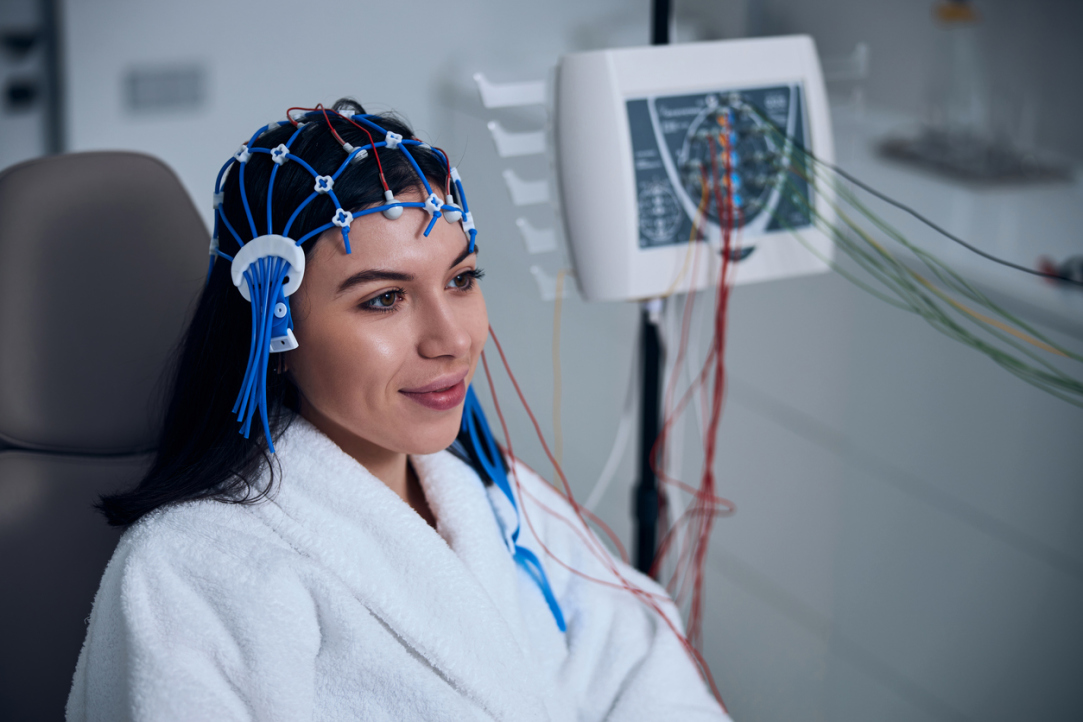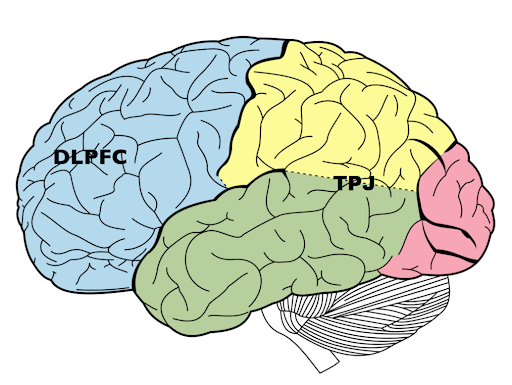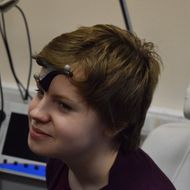Readiness to Punish Others for Selfish Behaviour Explained by Functional Brain Connections

The stronger the functional brain connections, the less inclined someone is to punish others for unfair behaviour. This conclusion was reached by HSE researchers following a neuroimaging experiment. Their paper ‘Wired to punish? Electroencephalographic study of the resting-state neuronal oscillations underlying third-party punishment’ was published in the journal Neuroscience.
Productive and predictive interaction with other people is possible thanks to the existence of numerous social norms. However, the fact that these norms exist does not guarantee that they will be followed: punishment for norm violators is needed. This is how various forms of social punishment act as tools to reinforce order and cooperation in communities. Punishment may be imposed by the victim of the violation (the second party) or an observer who had not suffered (a third party).
Whole networks of various brain structures are involved in third-party punishment decision-making. The key zones are the dorsolateral prefrontal cortex (DLPFC) and temporoparietal junction (TPJ). Researchers assume that the TPJ evaluates the level of guilt and deliberateness of the violation, while the DLPFC receives this signal on guilt assessment and transforms it into a specific decision on punishment.

The interaction between the TPJ and DLPFC is important for making a decision on punishment. HSE University researchers assumed that the initial connectivity between these areas in a specific human brain impacts a person’s readiness to impose punishment.
To confirm this hypothesis, the researchers conducted a neuroimaging experiment. At first, the participants’ brain activity was recorded with electroencephalography (EEG) over a span of ten minutes. During this time, the participants did not perform any tasks, and during the last five minutes, they sat with their eyes closed. Such recording of brain activity in resting state helped with further analysis to assess the power of connection between different brain areas in each of the participants. A total of 17 people entered the final sample, each playing the role of a third party.

Oksana Zinchenko, research fellow at the Institute for Cognitive Neuroscience
In classical neuroimaging studies, we rely on data that is recorded while the participants are completing the assignment. However, in the studies where we receive data on brain activity in resting state, we can assume, with certain limitations, how a person who has not even seen the task would behave.
Immediately after EEG, the participants were given an assignment to observe two other people playing the ‘dictator game’. The first player, the ‘dictator’, received 40 coins in each attempt, part of which they kept for themselves, while the other was given to the other player – the receiver. The actions of both players were programmed, but the experiment participants believed they were real people.
The role of the observer (the third party) was as follows: when the dictator made a decision on money distribution, the observer could ‘punish’ them for an unfair decision. The punishment was a ‘fine’. However, in order to issue a fine, the participant had to invest their coins. The dictator received a fine that was twice as high as the invested amount. The money they had left was converted into real payment for participating in the experiment.
For example, in one round, the dictator decided to keep 35 coins and give five coins to the receiver. The experiment participant decided to invest 10 coins in punishing the dictator, and 20 coins were withheld from the dictator’s win in this round.
For all rounds with unfair decisions, the level of punishment was calculated as the number of game money the participant was willing to spend in order to punish the dictator. Following this, the level of punishment was correlated with connectivity between the temporoparietal junction and the dorsolateral prefrontal cortex.
The researchers found that the stronger the connectivity between these two areas, the lower the level of punishment, which meant less money spent punishing the dictator for unfair decisions. This connectivity also likely reflects the inclination to accumulate evidence against the dictator. Further research may confirm or refute this hypothesis.
It was also confirmed that the functional condition of TPJ in resting state impacts a person’s readiness to punish others for injustice. It is assumed that a more ‘sensitive’ TPJ means that unfair behaviour causes a stronger guilt evaluation signal, which is followed by a stricter decision on punishment.
See also:
Cognitive Reappraisal of Negative Emotions Can Help Manage Stress
Researchers at the HSE International Laboratory of Social Neurobiology assessed the effectiveness of two strategies for regulating emotions: reappraisal and suppression. Having analysed data on the electrical activity of 60 individuals’ brains, the scientists discovered that both approaches put additional strain on the nervous system. It was also found that individuals who are prone to emotional contagion tend to be more effective in using reappraisal and managing negative emotions. The paper has been published in Experimental Brain Research.
Russian Researchers Unveil Mechanism Underlying Language Processing Disruptions in Epilepsy Patients
Researchers at HSE University and the Pirogov National Medical and Surgical Centre have examined alterations induced by epilepsy in the language-related neural network within the brain. Using graph-based analysis, the researchers studied fMRI data from 28 patients and found that in epilepsy, both hemispheres of the brain become activated during language processing and short connections form between the hemispheres, while long connections within one hemisphere are disrupted. The study has been published in Epilepsy&Behavior.
HSE Creates ‘Transfer of Neurocognitive Technologies’ Consortium
HSE, the Pirogov National Medical and Surgical Centre, and the Centre for Speech Pathology and Neurorehabilitation of the Moscow Healthcare Department have signed an agreement on cooperation and the creation of a ‘neuro-consortium’ under the name ‘Transfer of Neurocognitive Technologies’. The new body will boost the development and implementation of advanced solutions in neurotechnology aimed at maintaining and improving people's health. The agreement was signed for five years, and the consortium is open to new participants.
'While it May Sound Futuristic, It Holds Great Promise': Olga Dragoy Shares Her Thoughts on Language Function Restoration and the Future of Neurotechnology
In the spring of 2023, the fifth strategic project of the Priority 2030 programme, 'Human Brain Resilience: Neurocognitive Technologies for Adaptation, Learning, Development and Rehabilitation in a Changing Environment,' was launched at HSE University. The strategic project brings together researchers from all campuses of HSE University. In her interview with the HSE News Service, Olga Dragoy, head of the strategic project and Director of the HSE Centre for Language and Brain, shares an overview of the advanced technologies neuroscientists are creating today, the underlying inspiration driving these efforts, and the operational dynamics of interdisciplinary applied projects.
‘It Was Great to Look at Scientific Achievements through the Eyes of a Journalist, not a Scientist’
HSE University in Nizhny recently hosted the 2nd Autumn Neuro-linguistic School ‘NeuroSciCom: Popularising Language and Brain Studies’ for scientists and students at the HSE Centre for Language and Brain Studies in Nizhny Novgorod. The school was held as part of the 'Human Brain Resilience: Neurocognitive Technologies for Adaptation, Learning, Development and Rehabilitation in a Changing Environment' Strategic Project of the Priority 2030 programme.
The Brain Is a Network of Networks. Scientists Have Found a Way to Unravel Them
A team of researchers from HSE University and the Artificial Intelligence Research Institute (AIRI) have demonstrated the effectiveness of the PSIICOS method they had previously developed for non-invasive mapping the neural networks in the brain based on its electrical activity. Unlike other methods, it does not search for individual neuronal sources to be then combined into networks but instead looks directly for the functional networks of interconnected neuronal populations—and does so swiftly and accurately. The study findings have been published in NeuroImage.
HSE Neuroscientists Use Neural Network to Enhance Neurofeedback Technology
Researchers from HSE University and the Artificial Intelligence Research Institute (AIRI) have successfully lowered the latency between a change in brain activity and the presentation of the corresponding neurofeedback signal by a factor of 50. The results were obtained by employing a neural network trained in low-latency filtering of brain activity signals from diverse individuals. This approach opens up new prospects for the treatment of attention deficit disorder and epilepsy. A paper with the study findings has been published in Journal of Neural Engineering.
Online Rhythmic Transcranial Magnetic Stimulation Can Reveal the Precise Moment When Preferences Shift in the Human Brain
Cognitive dissonance is a complex and multifaceted psychological phenomenon that arises in challenging decision-making scenarios. Multiple regions of the brain participate in its occurrence, yet the neurodynamics of underlying cognitive mechanisms remain a subject of debate. Researchers from the HSE Institute for Cognitive Neuroscience have proposed the use of online transcranial magnetic stimulation applied to participants as they were actively engaged in tasks, to pinpoint the moment of cognitive dissonance resolution. Their findings have been published in a review paper in Frontiers in Human Neuroscience.
HSE University Holds 10th Summer School ‘Eye-tracking in the Lab and Beyond’
This year, more than 100 students from Russia and abroad took part in the 10th summer neurolinguistic school, ‘Eye-tracking in the Lab and Beyond’. The school is held annually by the HSE Center for Language and Brain. Leading experts spoke about advanced developments and research in the field of video-oculography.
New Technologies for Preserving Brain Functions: ‘Not Magic, but Normal Engineering’
New methods of brain mapping will make it easier to identify the cortex areas responsible for speech functions and to perform operations on the brain, as well as reduce the likelihood of damage to important areas. In addition, this will allow for more frequent use of non-invasive methods for restoring speech and other functions lost due to injuries and illnesses.


